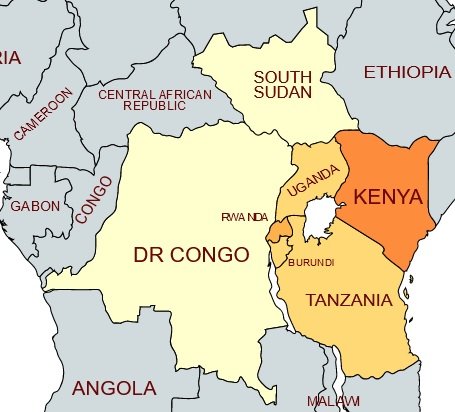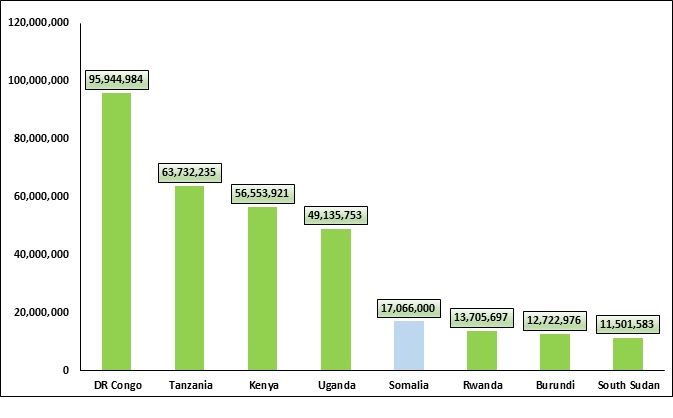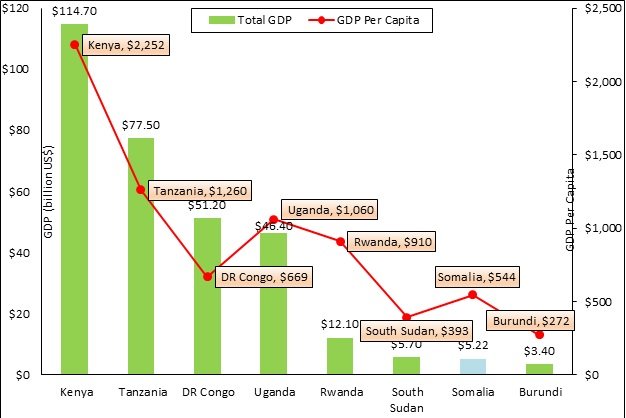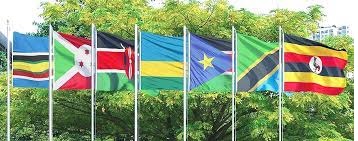By Abdighani Hirad
- Summary
Is Somalia ready to join the East African Community (EAC)? Would Somalia’s political, economic, and social fragility put it in a weak position and negate any benefits derived from the EAC? Given inadequate labor export capacity and critical domestic skills shortages, would the much-touted labor mobility between the EAC members help Somalia? Somalia might be aligning its domestic regulatory practices in services with those in EAC, but does Somalia has the regulatory institutions required by the EAC? Somalia is not ready for deep integration into the EAC Community. Still, after reforming its national institutions, a variable geometry—incremental approach to EAC membership could usher in new fast-tracked reforms for Somalia regarding financial regulations, healthcare modernization, and small industry development. Given weak institutions, Somalia can be given longer transition periods to conform with EAC regulatory requirements.

This article will review Somalia’s readiness for the EAC in light of the challenges Somalia is facing and will recommend that Somalia not join the EAC now. However, after reforming its institutions, gradual approach is the most prudent way to integrate Somalia into EAC.
II. Brief History of EAC
The Treaty for reestablishing the East African Community was signed by the heads of state of Kenya, Uganda, and Tanzania and entered into force on July 7, 2000. Two new members, Rwanda, and Burundi, acceded to the Community in 2007 and the Republic of South Sudan in 2016, bringing its membership to six. In 2022 the Democratic Republic of Congo (DRC) was added, opening the Community to the ports of Atlantic Ocean trade.
As the following chart shows, based on 2022 estimates, Somalia’s population will be the fifth largest of the Community, with one of the smallest gross domestic product (GDP) per capita of US$544. Overall, with Somalia joining, the Community will have a population of 320 million with a whopping GDP of US$330 billion (US$1,030 per capita).



The Community established a Customs Union in 2005 and Common Market in 2010. It is in the process of establishing a Monetary Union by 2023, but this could be delayed given the various financial regulations it entails. The Community’s ultimate objective is launching a complete political Union—a “Political Federation of the East African States.” Even the more established organizations like the Common Market for Eastern and Southern Africa (COMESA), Southern African Development Community (SADC), and Economic Community of West African States (ECOWAS) do not have a provision for political union in their founding treaties. By its integration process, and objectives, the new EAC typifies the regional blocs that the new wave of regionalism has spawned. It takes for its model the EU and has adopted the EU’s institutional framework—it is highly institutionalized.
III. Somalia’s EAC Application
Somalia applied to be a member of EAC in 2012; however, that application was rejected. Again in 2019, Somalia submitted its application for EAC membership but was put pending until it was again revisited when President Hassan Sheikh Mohmoud was elected in 2022.
On January 25, 2022, “…officially launched the verification mission to assess the Federal Republic of Somalia’s readiness to join the Community.”[1] The verification process was scheduled from January 25 to February 3, 2023, where the EAC technical team would engage the various sections of the Federal Government of Somalia (FGS). On June 1, 2023, EAC Heads of State deliberated & adopted the report verifying the application of the Federal Republic of Somalia to join the EAC and directed the EAC Secretariat & Council to commence negotiations with Somalia immediately and report to the next Ordinary Summit.
As per Article 3 (2) of the Treaty Establishing the EAC, when a partner state applies to join the Community, the following factors are considered:
- Geographical proximity to and interdependence between it and the Partner States.
- Acceptance of the Community as set out in this Treaty.
- Adherence to universally acceptable principles of good governance, democracy, the rule of law, observance of human rights and social justice.
- Potential contribution to the strengthening of integration within the East African region.
- Establishment and maintenance of a market-driven economy.
- Social and economic policies being compatible with those of the Community.
Somalia has a geographical proximity and interdependence between Somalia and the partner states; however, Somalia, as a fragile state, has a host of domestic challenges. The low-income and inadequate implementation capacity biases would be amplified if Somalia joined the EAC. In terms of the economy, Somalia would need to be careful not to have overly optimistic expectations for trade liberalization and to consider the benefits and implications of EAC membership, especially given the country’s underdeveloped institutional and physical infrastructure. The advantages of trading in products will probably be realized by importing goods that one cannot create effectively. Somalia will require a broader regional market to lessen its reliance on imports from non-East African countries, and EAC factor mobility norms may help with factor shortages. Somalia will probably continue to follow EAC rules for some time as well. Additionally, integration must be weighed against the dangers of enduring regional oligopolistic rents.
Most of the current EAC members are at the bottom of the world ranking in terms of institutions, human capital, infrastructure, market, and business sophistication parameters, as shown in Figure 4. Therefore, the benefits derived from the Community whose members are ranked among the world’s lowest performers must be evaluated by Somalia.
Abdighani Hirad
Email: hirad85@gmail.com
—————
Abdighani Hirad is a financial risk professional with more than 20 years of experience in financial compliance, evaluation, and monitoring in banking and financial institutions. He holds a B.S. in Economics and an M.S. in Statistics from George Mason University, Virginia, USA.
[1] https://www.eac.int/press-releases/2711-eac-officially-launches-the-verification-mission-to-assess-somalia-s-readiness-to-join-the-community
[2] https://www.eac.int/press-releases/2711-eac-officially-launches-the-verification-mission-to-assess-somalia-s-readiness-to-join-the-community


Leave a Reply